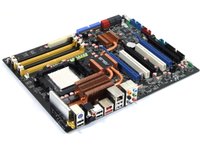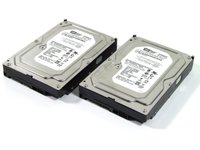AMD Phenom II X4: 45nm Benchmarked
Test Hardware Details
Test Systems
Here are both of our test systems, for the AMD and Intel platforms.


Motherboards
The components we used for our recent CPU charts were completely updated to the latest and greatest. For our AMD processors we used an Asus motherboard with an AMD 790FX, and for the Intel CPUs, a Gigabyte X48 motherboard.


System RAM
We used DDR2-1066 modules from A.Data for all of our AMD processor testing, with timings set to CL 4.0-4-4-12. On the Intel platforms, we used DDR3-1333 with timings set to CL 7.0-7-7-21. Depending on how we clocked the processor, we used tighter timings on the RAM, as specified by the vendor.


Graphics Cards
Get Tom's Hardware's best news and in-depth reviews, straight to your inbox.
To keep the game benchmarks focused on the processor contribution, we used the same high-performance MSI N280GTX-T2D1G-OC for all of our builds; it includes the Nvidia G200 graphics chip.
Hard disks and USB Flash Drive
Our test systems include two 320 GB Western Digital hard disks. These WD32000AAKS drives incorporate only a single platter in the drive, which keeps their power consumption and cooling needs to a minimum. We loaded our Linux systems from a Corsair Flash Voyager USB stick, but our Linux Parcourser Benchmark doesn’t work on Nehalem systems, so we had to forgo the Linux results in these benchmarks.


Blu-Ray Optical Drive and Sound Card
For our Blu-ray benchmark we used the Pioneer BDC-202BK optical drive. To keep the playback benchmarks across platforms as similar as possible during CPU load testing, we used a Creative X-Fi Xtreme Gamer soundcard on all platforms. It includes its own built-in audio processor to offload the CPU as much as possible during such tests.


Power Supply and CPU Cooler
To supply our test systems with ample, reliable power, we used an 850 Watt PSU from CoolerMaster. We cooled our AMD and Intel processors with Zalman’s CNPS 9700 LED cooler.
Current page: Test Hardware Details
Prev Page Benchmark Settings Next Page Sandra CPU And Multimedia